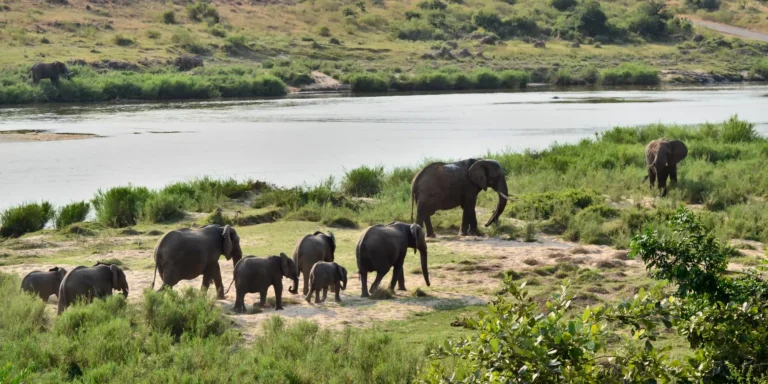
10 DAYS IN SOUTH AFRICA TRAVEL ITINERARY
Here is our itinerary of 10 days in South Africa to discover this country from the south of Cape Town to safaris in the north at the Kruger National Park!


The Kruger National Park is one of the wildlife parks where you can experience a safari self drive. Here, without the need for guides to accompany you, you have the opportunity to explore South Africa’s rich animal world at your leisure, using your own vehicle. Here’s what you need to know about the self drive in Kruger National Park and some Kruger self drive tips.
The safari self drive in Kruger National Park is an electrifying and adrenaline-fuelled experience.
Once through the entrance gate, you immediately have the impression of being inside the movie Jurassic Park, but in this case surrounded by hungry felines and majestic animals such as rhinos and elephants.
We were privileged to experience this extraordinary adventure, and in this article we would like to share with you valuable tips and information that we hope will be of great help to you if you decide to go on a Kruger self drive safari.
To gain access to the Kruger National Park and explore the park doing Kruger self drive safari, it is essential to be in possession of the following documents:
The Conservation Fee is a vital contribution towards accessing the park and supporting all conservation and maintenance projects in the Kruger National Park. For foreign visitors, this fee amounts to 460 South African rand for adults, equivalent to about €23, while for children, the fee is halved.
The Indemnity Form is an assumption of liability form, through which you declare that you are aware of the rules of the park, that you release the park management from any liability for any accidents and that you are aware of the risks involved in entering the Kruger National Park.
Considering that the queues for entry gate checks can be quite long, sometimes taking up to half an hour or more, to speed up the process and minimise waiting time in line we recommend that you
Unless you are staying in a private reserve within the Kruger National Park, you will have to pass through one of its 11 entrance gates to gain access.
These gates are distributed as follows: 5 in the southern part of the park, 3 in the central part and 3 in the northern part. A detailed map of the park is available on the official Sanparks website at this link.
Based on information provided to us by local residents and accommodation owners, we recommend avoiding two of these entrances, where recent incidents of violence have occurred: the Phabeni Gate and the Numbi Gate. These gates are located in more isolated areas and in close proximity to the so-called ‘Townships’, settlements with a high level of poverty and where crime is likely to occur.
The opening and closing times of the gates vary depending on the season. During winter, the park opens from 6 a.m. to 5.30 p.m., while in summer the gates are open from 5.30 a.m. to 6.30 p.m. The exact opening times can be found at this link.
The entrance gates are generally located in the vicinity of the camps, the equipped areas within the Kruger National Park, which we will discuss in more detail later. On arrival at the gates, the following checks will be made:
During park gate entry checks, rangers will ask you to inspect your car so we advise against trying to be clever!
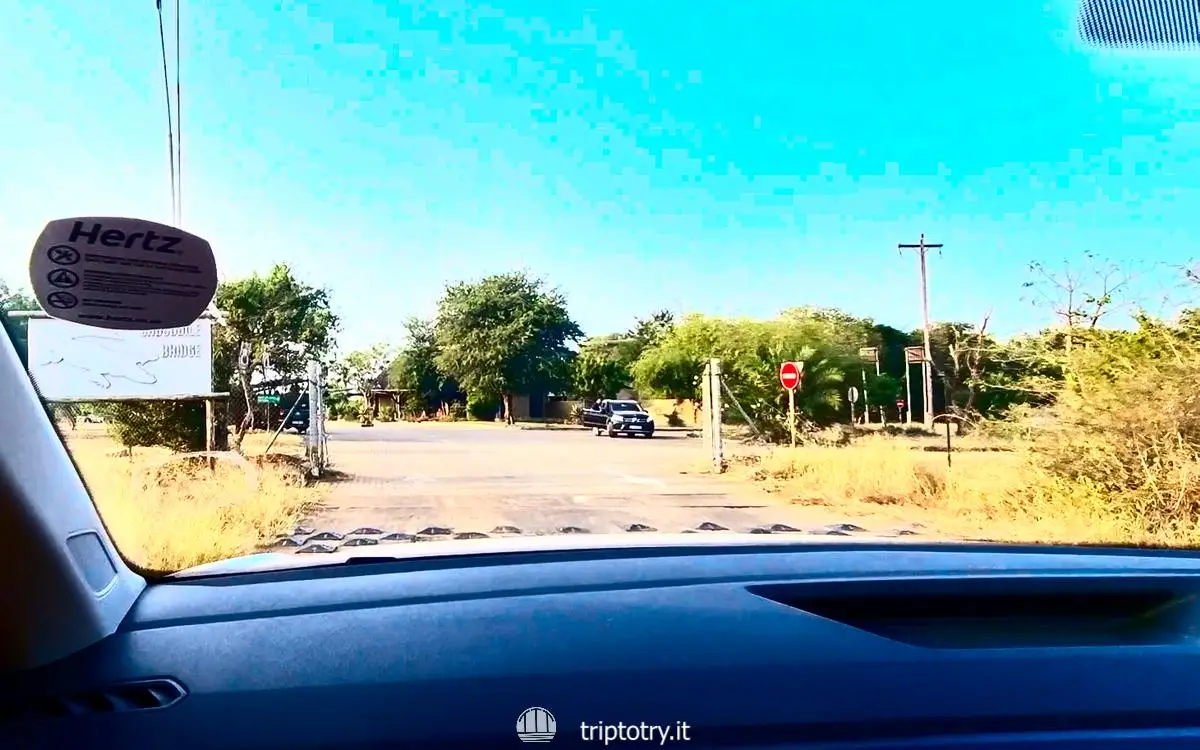
Kruger self drive safari: Entrance gate Crocodile Bridge
If your intention is to go on a Kruger self drive safari, we recommend finding accommodation close to the park or within it.
If you opt for private reserves, it is important to bear in mind that these reserves may have different rules than the Kruger National Park, and may not allow self-drive safaris. We therefore advise you to check this possibility before booking.
The other two main options are camps within the park or accommodation outside the Kruger.
If you are looking for an inexpensive solution, you can opt for accommodation outside the park, but we recommend finding one in the immediate vicinity. For example, we chose a lodge outside the park, the Crocodile Bridge Safari Lodge, which is only a two-minute drive from the Crocodile Bridge gate and next to the control station.
In this way, as we wanted to be at the gates by opening time to explore the park with a few tourists, we were able to save valuable time to sleep and get as much rest as possible (safaris are a challenging experience anyway and the wake-up call is in the early hours).
Camps within the Kruger offer various accommodation options, from tents to campers, caravans, small bungalows, cottages and even luxury lodges. Camps areas are usually equipped with reception, toilets, kitchen, laundry, barbecue facilities and in some cases swimming pools.
Regarding the choice of area in which to book accommodation, if you have several days to spare, it might be a good idea to book facilities in different parts of the park: keep in mind that to cross the park from north to south, it would take about 9 hours of driving (speed is limited to 40 km/h).
If you only have a few days and only have to choose one location from which start safari self drive in Kruger National Park, we recommend opting for the south-central part, as this area offers a better chance of spotting all the Big Five.
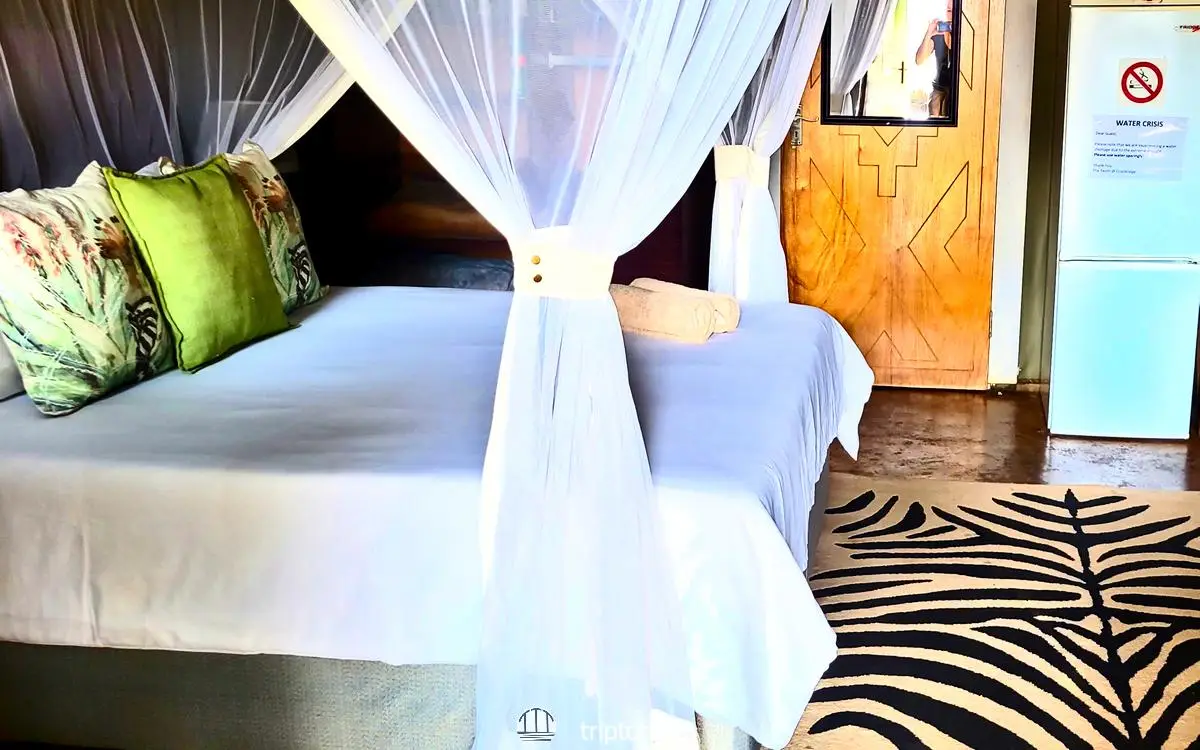
Kruger self drive tips: Our tent
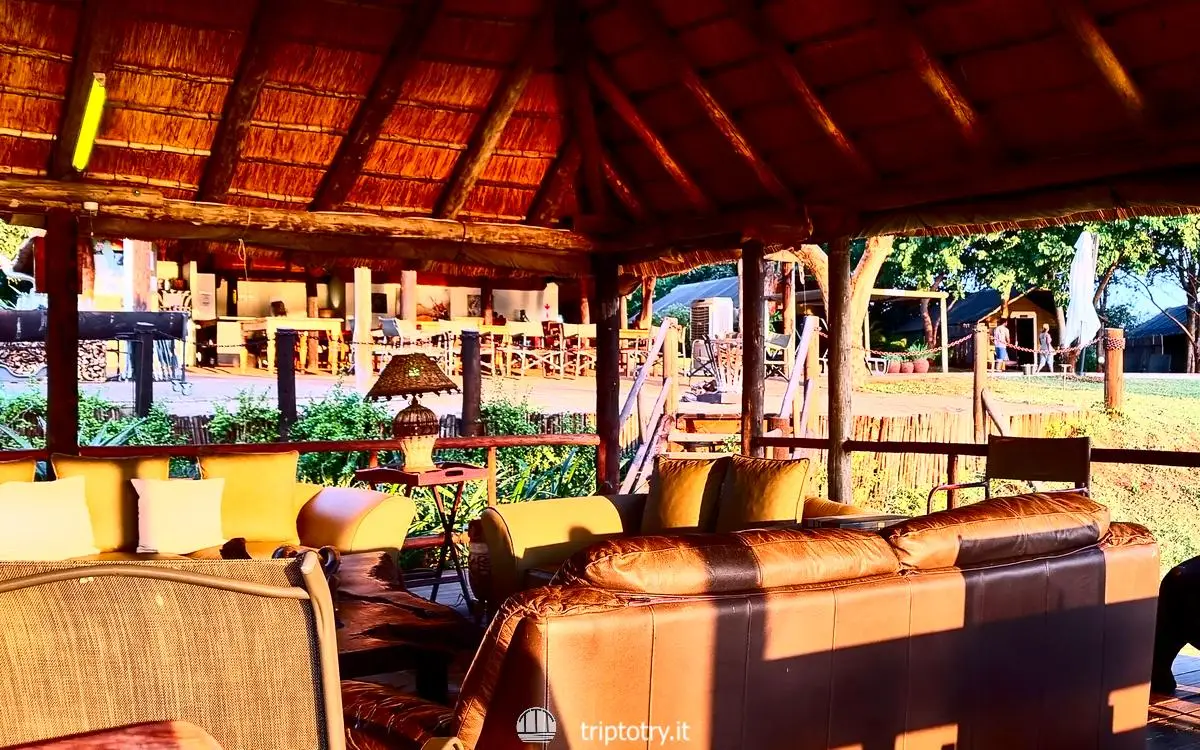
Kruger self drive tips: Crocodile Bridge Safari Lodge
There are two basic rules that you must absolutely follow during your safari self drive in Kruger National Park:
These two rules are essential to ensure your safety and respect for the wild animals.
There are other important rules to follow during your safari, such as no smoking, no alcohol or feeding the animals. You can find the full regulations on this LINK, and we strongly recommend that you read them carefully before embarking on your safari self drive in the Kruger National Park.
One thing that we often noticed during our self-drives in the Kruger was that several visitors were quietly travelling with their car windows open! We enquired with the rangers and discovered that having the windows open is not a danger with most animals, this is because they see the vehicle as a single volume (unlike monkeys with whom we suggest you roll up the windows!). However, it is important never to lean out of the window because in such cases the animals will be able to identify two separate elements!
Here are some valuable tips for your safari self drive in the Kruger National Park:
By following these tips, you will be able to make the most of your safari self drive in Kruger National Park and will have the opportunity to live unforgettable experiences in the wild nature of South Africa.
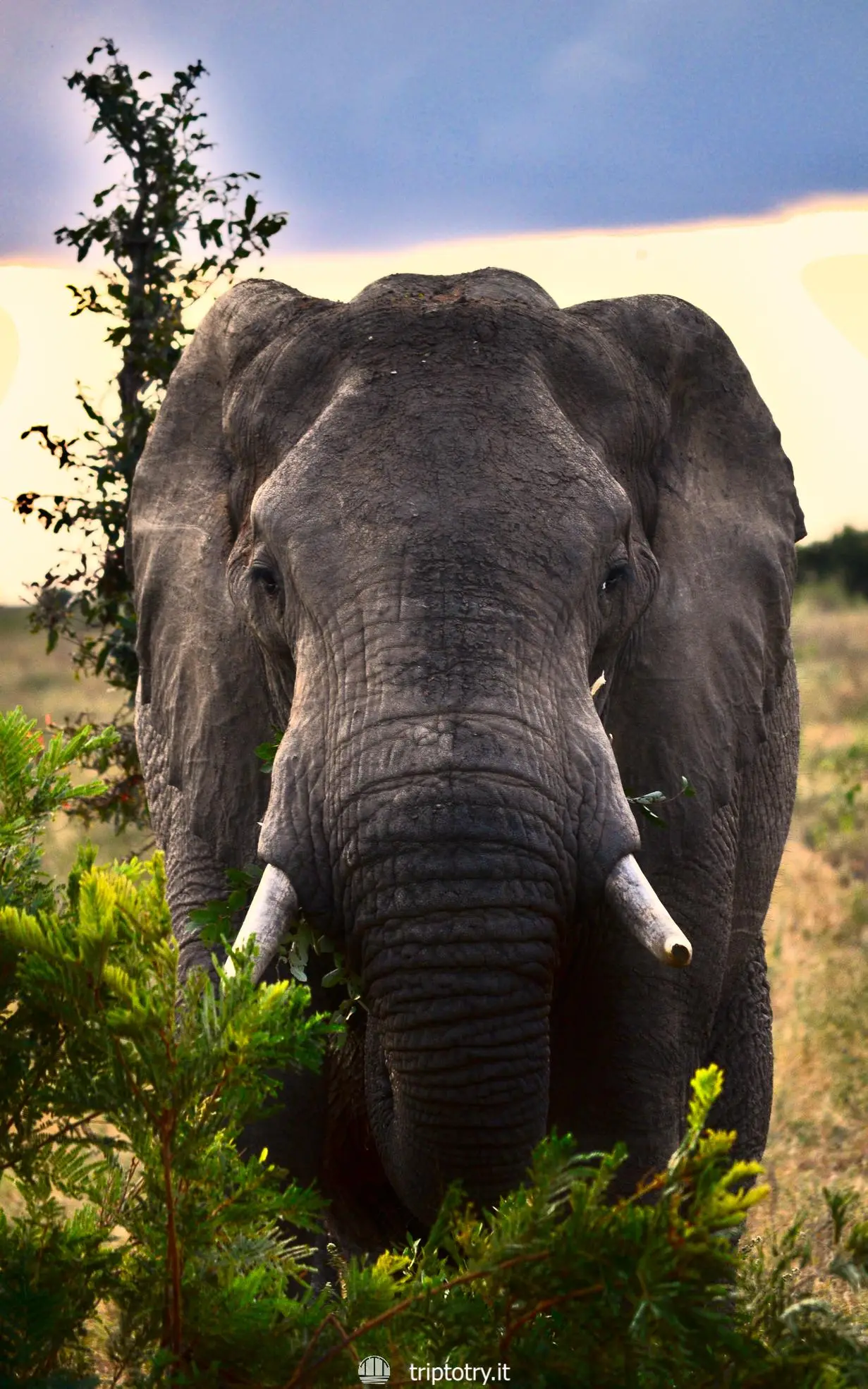
Road conditions in Kruger National Park are generally good.
The main roads are asphalted and well maintained, while the secondary roads are dirt but usually in good condition. Directions are clear and well-signposted at every intersection, making navigation within the park relatively simple.
However, it is always a good idea to have a detailed map of the Kruger National Park with you, especially if you plan to explore less frequented areas during your safari self drive in Kruger National Park or if you want to have a clearer view of the layout of roads and landmarks within the park. You can download detailed maps of the Kruger National Park divided by area from this link to help you plan your self-drive safari.
Each camp is equipped with maps of the Kruger National Park and other nice gadgets, in case you forgot anything!
Within the Kruger National Park, there are more than a dozen camps, which are equipped areas for visitors. These camps are generally located near the entrance gates, but it is also possible to find more camps within the park. You can consult a very detailed map of the camps at this link to plan your visit.
In all Kruger National Park camps, you will find the following services:
Some camps are larger than others and offer a wider range of services. For example, Skukuza, Satara and Lower Sabie are among the larger camps and include restaurants with panoramic views that allow you to continue watching the wildlife while you eat. Other camps may only offer basic services, but are still convenient landmarks.
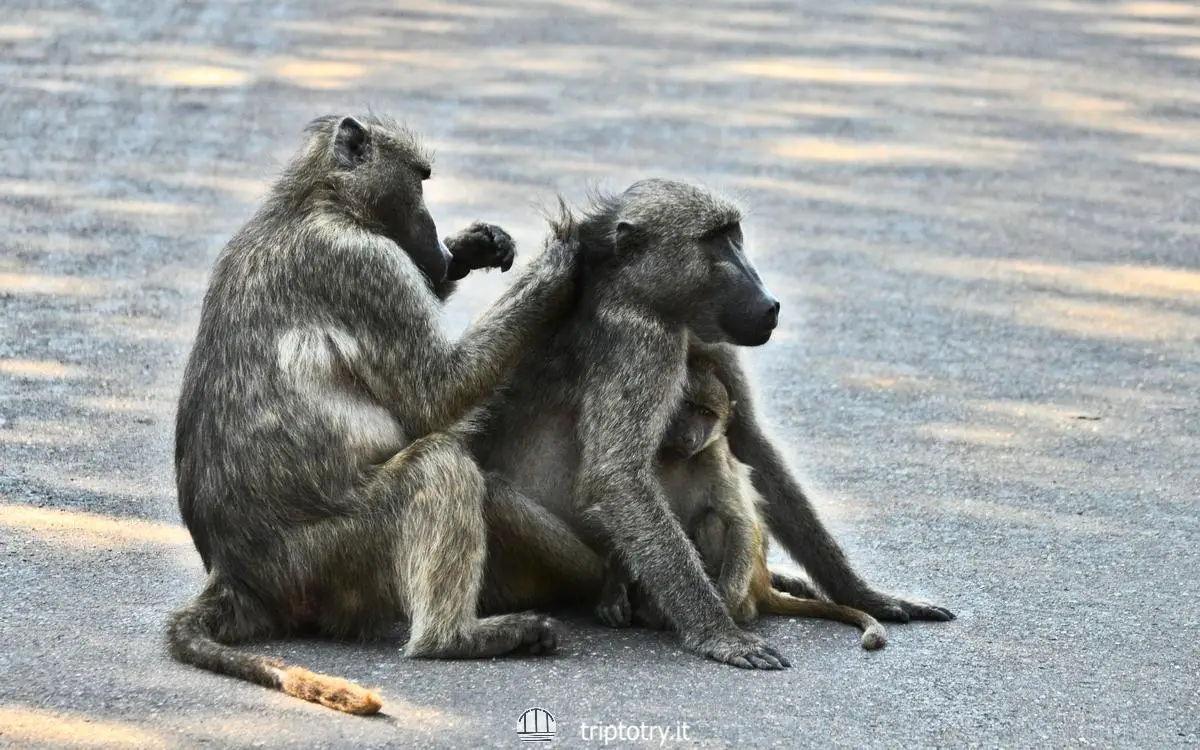
Kruger self drive safari: Meetings on the roads of Kruger
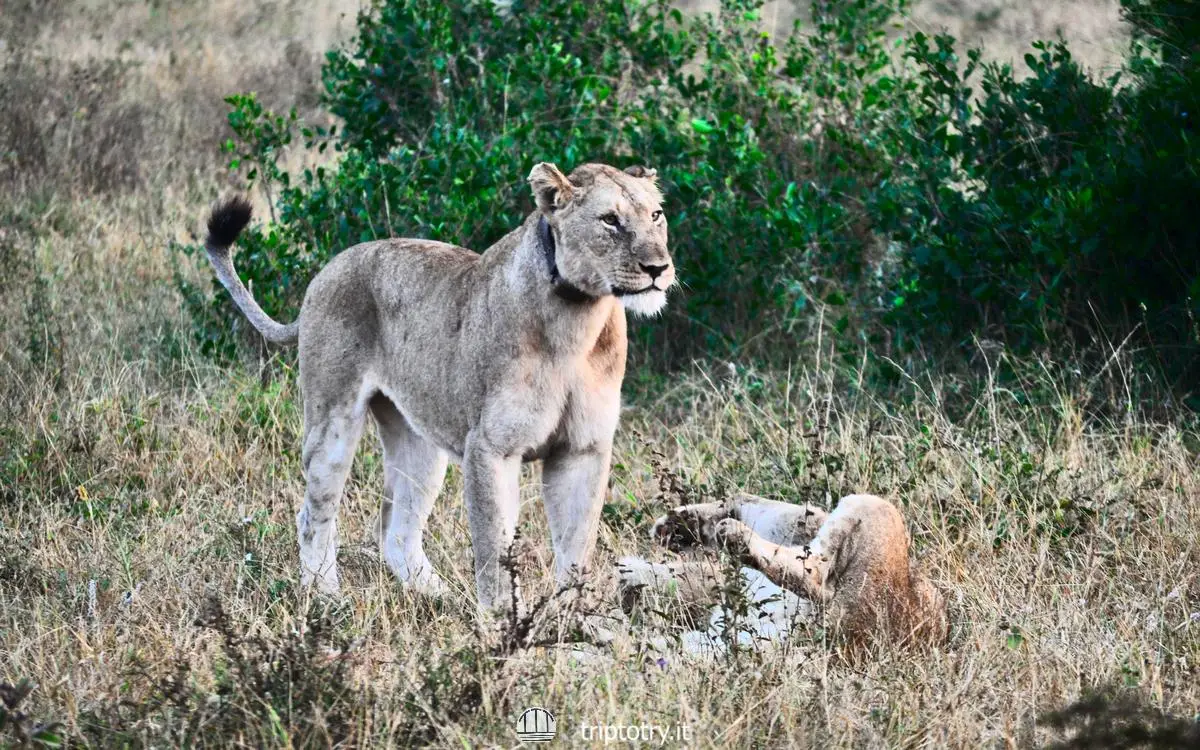
Kruger self drive safari: Lionesses in the Kruger National Park
Picnic and get out zones in the Kruger National Park are unfenced areas where you are allowed to get out of the car for a break or to stretch your legs during your safari self drive in Kruger National Park. Here is some information on these areas:
A very important tip for your safari self drive in Kruger National Park is to arrange for no phone coverage, especially in remote areas of the park. Although there is usually phone coverage along the main roads and within the camps, you may encounter areas where the signal is weak or absent.
You can use offline maps or GPS navigation apps that work without a data connection to help you find your way around the park.
At this link you can find an indicative map with mobile phone coverage to get a rough idea of where you may or may not have coverage.
In camps within the Kruger National Park, you can generally pay by credit card at restaurants and shops.
However, if you need to refuel inside the park, you can only pay in cash.
Therefore, we recommend that you always carry a sufficient amount of cash with you to cover fuel expenses or for any emergency needs.
Here is a list of things that we highly recommend you take with you on your safari self drive in Kruger National Park:
We hope we have provided you with useful information for planning your safari self drive in the magnificent Kruger National Park. It is truly an extraordinary experience that will give you unique and unforgettable emotions. If you would like to delve further into certain aspects or get more details about the Kruger National Park, we recommend to stay connected with us, well’publish soon other articles about Kruger National Park.
We wish you and all future travellers to the Kruger an extraordinary experience and lasting memories amidst the wonderful fauna and flora of this national park. Happy safari self drive and as always, “trip to try”!

Here is our itinerary of 10 days in South Africa to discover this country from the south of Cape Town to safaris in the north at the Kruger National Park!

© Trip To Try - This website idea comes from Barbara and Riccardo and their love for travel to bring home new amazing experience from other cultures and beautiful places around the world. We hope you enjoy our site and our style!
Feel free to Contact Us to share with us your opinion and suggestion!
Privacy - Sitemap